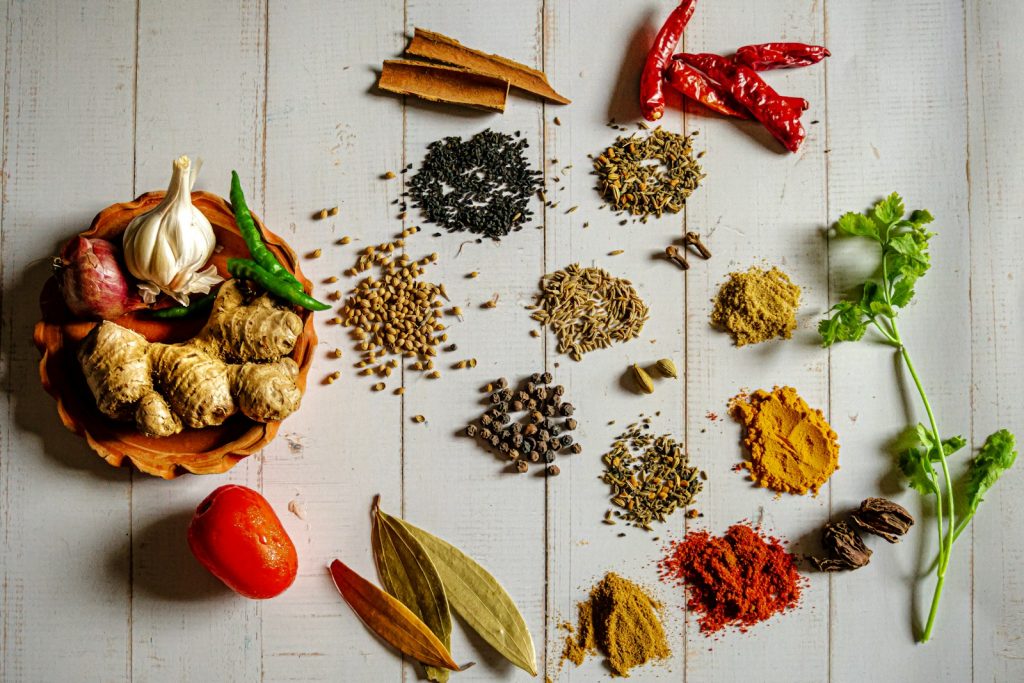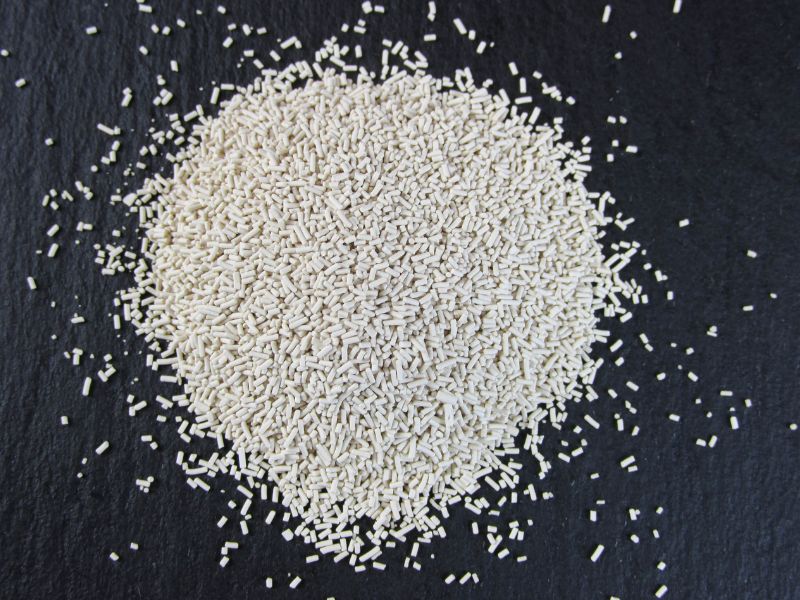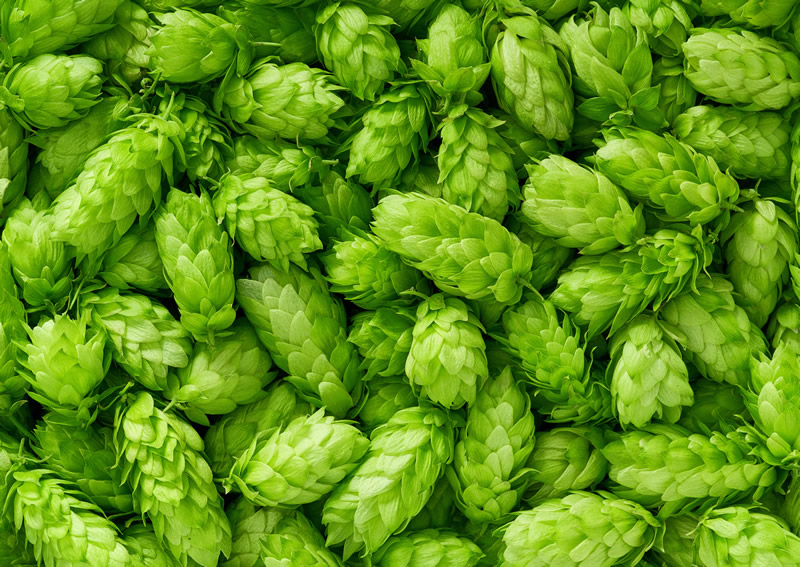Are you a homebrewer looking to add some unique flavors to your beer? We will provide you with all the information you need to create delicious and aromatic brews using a wide variety of fruits, spices, and herbs. Whether you’re looking for a zesty citrus flavor, a hint of warmth from cinnamon, or a refreshing herbal twist, this guide has got you covered. So grab your brewing equipment and get ready to take your beer to the next level with our step-by-step tips and tricks.
Choosing the Right Ingredients
Understanding flavor profiles
When it comes to brewing beer with fruits, spices, and herbs, understanding flavor profiles is crucial. Each ingredient brings its own unique flavors and characteristics, and knowing how they will interact with each other and with the base beer is essential for creating a well-balanced and delicious final product. For example, citrus fruits such as oranges or lemons can add a refreshing acidity, while spices like cinnamon or cloves can bring warmth and complexity. By understanding these flavor profiles, you can make informed decisions about which ingredients to use and how they will contribute to the overall taste of your beer.
Selecting high-quality ingredients
Choosing high-quality ingredients is key to brewing a successful beer. When it comes to fruits, make sure they are ripe and free from any bruises or blemishes. Opt for fresh, organic fruits whenever possible to ensure the best flavor. When selecting spices and herbs, choose ones that are aromatic and vibrant in color. It’s also important to source your ingredients from reputable suppliers to ensure their quality and authenticity. By starting with high-quality ingredients, you set the foundation for a flavorful and enjoyable brew.

Considering the compatibility of flavors
When adding fruits, spices, and herbs to your brew, it’s important to consider the compatibility of flavors. Some ingredients naturally pair well together, while others may clash or overpower one another. For example, the bright and tangy flavors of raspberries can complement the spiciness of ginger, while the earthiness of sage can enhance the floral notes of chamomile. Experimenting with different flavor combinations is part of the fun of homebrewing, but it’s important to strike a balance and ensure that no single flavor dominates the beer. Consider the intensity, sweetness, acidity, and aroma of each ingredient, and how they will work together to create a harmonious and well-rounded flavor profile.
Preparing Fruits, Spices, and Herbs
Washing and sanitizing the ingredients
Before adding fruits, spices, or herbs to your brew, it’s crucial to wash and sanitize them properly. This helps remove any dirt, pesticides, or bacteria that may be present in the ingredients. For fruits, rinse them thoroughly under cold water and pat them dry. Spices and herbs can be rinsed or wiped clean with a damp cloth. To ensure proper sanitization, you can also soak the ingredients in a sanitizing solution approved for brewing. This step is essential to maintain the integrity of your beer and prevent any potential off-flavors or contamination.
Cutting and processing fruits
When using fruits in brewing, it’s important to properly cut and process them to release their flavors and juices. For larger fruits like oranges or peaches, you can start by removing the peel and pith, then slicing or chopping the fruit into smaller pieces. This helps the flavors infuse more easily into the beer. Smaller fruits like berries can be lightly crushed or muddled to release their juices and increase surface area. If you’re using fruits with seeds, such as cherries or grapes, you may want to remove the seeds to prevent any unwanted bitterness. Taking the time to properly prepare your fruits ensures that their flavors are fully expressed in your brew.
Crushing and grinding spices and herbs
When using spices and herbs in brewing, it’s often necessary to crush or grind them to release their flavors and aromas. Whole spices can be crushed using a mortar and pestle or a rolling pin. Grinding them creates a powder-like consistency, which can be convenient for adding the spices directly to the brew. Fresh herbs can be finely chopped or torn to release their oils. By crushing or grinding your spices and herbs, you ensure that their flavors are evenly distributed throughout the beer, providing a more consistent and balanced taste.

Adding Fruits, Spices, and Herbs to Your Brew
Determining the optimal time for additions
When it comes to adding fruits, spices, and herbs to your brew, timing is crucial. Each ingredient requires a different amount of time to infuse its flavors into the beer, and adding them at the right time ensures that the flavors are well incorporated without overpowering the base beer. Fruits with delicate flavors, such as citrus or berries, are often added towards the end of fermentation or during the conditioning phase. This allows their fresh and vibrant flavors to shine through. Spices and herbs can be added at various stages, depending on the intensity of their flavors. Generally, they can be added during the last 10-15 minutes of the boil, during fermentation, or during conditioning. Experimentation and tasting along the way will help you determine the optimal time for adding each ingredient to achieve the desired flavor profile.
Deciding on the appropriate form of ingredient
In addition to timing, choosing the appropriate form of ingredient is essential for achieving the desired flavors in your brew. Fruits can be added in various forms, such as whole, fresh, frozen, or pureed. Whole fruits can add subtle flavors and aromas, while pureed fruits can provide a more intense and concentrated taste. Spices and herbs can be used in whole, crushed, powdered, or extracted form. Whole or crushed spices can offer a bolder and more nuanced flavor, while powdered or extracted forms provide a more consistent and easily measurable addition. Consider the flavors you want to achieve and the convenience of handling each form when deciding how to add your fruits, spices, and herbs.
Creating flavor combinations
The art of brewing with fruits, spices, and herbs lies in creating harmonious and well-balanced flavor combinations. As mentioned earlier, understanding flavor profiles and compatibility of flavors is crucial. By thoughtfully combining different ingredients, you can create complex and unique flavor profiles that complement and accentuate the base beer. Consider pairing citrus fruits with spices like coriander or cardamom for a refreshing and zesty profile. Experiment with different fruits, spices, and herbs to discover new and exciting combinations. Don’t be afraid to be adventurous and push the boundaries of traditional brewing. With some experimentation and creativity, you can create your own signature flavor combinations that are sure to impress.
Using Fruits in Brewing
The different types of fruits used in brewing
When it comes to brewing with fruits, a wide range of options is available. Citrus fruits like oranges, lemons, and grapefruits are popular choices, thanks to their refreshing acidity and vibrant flavors. Berries such as raspberries, strawberries, and blueberries add a luscious sweetness and a burst of fruitiness to beers. Stone fruits like peaches, apricots, and cherries bring a juicy and subtle complexity to brews. Tropical fruits like pineapple, mango, and coconut infuse beers with exotic and tropical flavors. These are just a few examples of the many fruits you can use in brewing. Each fruit brings its own unique characteristics and can contribute to the overall flavor profile of your beer.
Balancing sweetness and acidity
When using fruits in brewing, it’s important to strike a balance between sweetness and acidity. Some fruits, like berries, tend to be naturally sweet, while others, like citrus fruits, are more acidic. Balancing these flavors is essential to avoid a beer that is overly sweet or excessively sour. Keep in mind that the sweetness of the fruits can be fermented out during the brewing process, so you may need to add sugars or other sweeteners to achieve the desired level of sweetness. Similarly, the acidity of certain fruits can be adjusted by adding acids like citric acid or using malts that provide a balancing effect. By carefully managing the sweetness and acidity of the fruits, you can create a well-rounded and enjoyable brew.
Enhancing aroma and flavor
One of the main reasons for using fruits in brewing is to enhance the aroma and flavor of the beer. Fruits can add a vibrant and enticing aroma that entices the senses. The natural oils found in the skins of fruits contribute to this aromatic experience. Additionally, the flavors of fruits can bring a new dimension to the beer, adding complexity and depth. Depending on the type of fruit used and the quantity added, the flavors can range from subtle hints to dominant characteristics. When using fruits in brewing, it’s important to taste and smell throughout the process to ensure that the aromas and flavors are developing as desired.

Incorporating Spices in Brewing
Understanding the intensity of spices
Spices can add depth, warmth, and complexity to your beer. Understanding the intensity of spices is important for achieving a balanced flavor profile. Some spices have a strong and dominant flavor, such as cinnamon or cloves, while others are more subtle, like nutmeg or ginger. Consider the overall flavor profile you want to achieve and choose spices accordingly. It’s also important to remember that spices can intensify over time, so it’s best to start with smaller quantities and adjust accordingly based on taste. Adding spices gradually allows you to fine-tune the flavor and avoid overpowering the base beer.
Achieving a harmonious blend of flavors
When incorporating spices into your brew, achieving a harmonious blend of flavors is key. It’s important to consider the interactions between different spices and how they complement or compete with each other. For example, coriander and orange peel are often used together in Belgian wheat beers, as they create a harmonious combination of citrus and spice. Similarly, ginger and cinnamon can add warmth and complexity to stouts and winter beers. Experimenting with different spice combinations allows you to discover exciting new flavors while ensuring a balanced and cohesive taste.
Balancing heat and bitterness
Certain spices, such as chili peppers or black pepper, can add heat and spiciness to your beer. Balancing this heat with other flavors is crucial to avoid overwhelming the palate. It’s important to consider the base beer style and the overall flavor profile you want to achieve. For example, a spicy chili-infused stout can provide a pleasant warmth and complexity, while in a crisp and light-bodied beer, the heat from spices should be more subtle. Balancing the heat with other flavors, such as sweetness or acidity, helps create a well-rounded and enjoyable brew. Always remember to taste and adjust as needed to achieve the desired level of heat and bitterness.
Utilizing Herbs in Brewing
Exploring various herbs and their characteristics
Incorporating herbs into your brewing opens up a world of possibilities. From floral and herbal notes to earthy or minty aromas, herbs can bring unique and intriguing characteristics to your beer. Common herbs used in brewing include chamomile, lavender, mint, rosemary, and sage, but there are countless others available for exploration. Each herb offers its own distinct flavors and aromas, making it important to experiment and discover which herbs best complement your chosen beer style.
Creating herbal infusions and teas
To effectively extract the flavors from herbs, creating herbal infusions or teas is a popular brewing technique. Infusing herbs in hot water draws out their essential oils and releases their flavors. You can then add the infused liquid to your beer during fermentation or at other appropriate stages. Creating herbal infusions and teas allows for precise control over the flavors and aromas you wish to impart. It also lets you experiment with different quantities and brewing times to find the perfect balance.
Enhancing complexity and freshness
Herbs can add complexity and freshness to your brew, enhancing the overall flavor profile. Floral herbs like chamomile or lavender can provide a delicate and perfumed aroma, while herbs like rosemary or thyme can bring an earthy and resinous character. Fresh herbs, when used properly, can also add a bright and vibrant quality to the beer. By thoughtfully selecting and incorporating herbs, you can elevate your brew to new heights and create a truly unique and enjoyable drinking experience.
Techniques for Extracting Flavor
Maceration
Maceration is a technique used to extract flavors from solid ingredients, such as fruits, spices, or herbs. In this process, the solid ingredients are crushed, chopped, or muddled to release their juices, oils, and aromatic compounds. The ingredients are then steeped in the beer to infuse their flavors. Maceration can be done at different stages of the brewing process, depending on the desired intensity of flavor. This technique is particularly effective for achieving a concentrated flavor from fruits and herbs.
Infusion
Infusion involves steeping or soaking solid ingredients in hot or cold liquid to extract their flavors. This technique is commonly used for brewing with spices and herbs. The solid ingredients are placed in a muslin bag or other suitable container and submerged in hot water or beer. The mixture is allowed to steep for a certain period of time, depending on the desired strength of flavor, and then the bag is removed. Infusion is a versatile method that allows for precise control over the flavors and aromas extracted from the ingredients.
Tinctures and extracts
Tinctures and extracts are concentrated forms of flavor that can be easily incorporated into your brew. Tinctures are created by steeping herbs, spices, or fruits in a high-proof alcohol, such as vodka, for an extended period of time. This extracts the flavors and oils from the ingredients and creates a concentrated liquid. Extracts, on the other hand, are commercially available flavor concentrates that are made by extracting the essential oils or compounds from the ingredients. Both tinctures and extracts offer a convenient and consistent way to add flavor to your beer, especially when precise measurements and control over flavors are desired.
Monitoring and Adjusting Flavor
Tasting throughout the brewing process
Monitoring and adjusting the flavor of your beer is an ongoing process throughout the brewing journey. It’s important to taste your beer at various stages, from the initial brewing process to fermentation, conditioning, and ultimately, bottling or kegging. The tasting allows you to assess the progress of the flavors, ensuring they develop as desired and that no off-flavors are present. By regularly tasting and taking notes, you can make adjustments to the recipe, such as adding more fruits, spices, or herbs, to achieve the desired flavor profile.
Scaling up or toning down flavors
As you gain experience with brewing, you may find that you want to scale up or tone down certain flavors in your beer. Scaling up the flavors can be achieved by adding more of the desired ingredients during the brewing process. Conversely, toning down flavors can be done by reducing the quantity of specific ingredients or by adjusting the brewing time or temperature. It’s important to carefully consider the impact that scaling up or toning down flavors will have on the overall balance of the beer. Experimentation and understanding of your ingredients are key to achieving the desired flavor profile.
Troubleshooting off-flavors
Sometimes, despite your best efforts, off-flavors may occur in your homebrew. These off-flavors can be caused by a variety of factors, such as contamination, improper fermentation, or improper handling of ingredients. It’s important to troubleshoot and address any off-flavors as soon as possible to prevent them from ruining the overall taste of your beer. There are numerous resources available to help identify and resolve common off-flavors, such as sourness, metallic tastes, or off-putting aromas. By understanding the potential causes and solutions for off-flavors, you can hone your brewing skills and consistently produce high-quality and delicious beers.
Achieving a Balanced Final Product
Considering the base beer style
When brewing with fruits, spices, and herbs, it’s important to consider the base beer style. Each beer style has its own unique characteristics and flavor profile, and the additional ingredients should enhance, rather than overpower, those qualities. For example, if you’re brewing a hop-forward IPA, it’s important to select fruits, spices, or herbs that complement the hop flavors, rather than compete with them. On the other hand, if you’re brewing a rich and malty stout, you may choose to add flavors that enhance the complexity of the malt bill. By considering the base beer style, you can ensure that the additional ingredients contribute to a well-balanced and enjoyable final product.
Finding the right combination and ratios
Achieving the perfect combination and ratios of fruits, spices, and herbs is a matter of experimentation and personal preference. It can be helpful to start with smaller quantities and gradually increase or decrease them based on taste and feedback. Keep detailed notes of the ingredients, quantities, and brewing process to replicate or adjust your recipe in the future. Don’t be discouraged if it takes a few attempts to find the right combination and ratios that you love. Brewing is a journey of exploration and discovery, and the joy is found in the process as much as in the final product.
Maintaining subtlety and drinkability
While it can be tempting to go all out with flavors when brewing with fruits, spices, and herbs, it’s important to maintain subtlety and drinkability in your final product. A well-crafted beer should be enjoyable to drink and not overwhelm the palate with intense or overpowering flavors. Balancing the flavors allows the base beer to shine through and ensures that the additional ingredients enhance rather than mask the overall experience. Remember to taste and adjust along the way, and don’t forget to consider the feedback of others who try your beer. By maintaining subtlety and drinkability, you’ll create a beer that is not only interesting but also pleasant and satisfying to drink.
The Art of Freezing Fruit for Homebrewing
As a bonus, we will delve into the process of freezing fruit for homebrewing, this crucial technique stands out for enhancing the flavor, aroma, and overall character of your beer, cider, or mead: freezing the fruit before use. This method, simple yet effective, can significantly impact the quality and taste of your brew. Let’s explore why freezing fruit is beneficial and how to do it correctly.
Why Freeze Fruit?
1. Breakdown of Cell Walls: Freezing fruit causes the water inside the cells to expand, breaking down the cell walls in the process. This breakdown makes it easier for the fruit’s sugars, flavors, and colors to be released and absorbed into your brew, ensuring a deeper, more integrated fruit character.
2. Improved Sanitation: Freezing can help reduce the load of wild yeasts and bacteria present on the surface of the fruit. While it doesn’t sterilize the fruit entirely, the reduction in microbial activity can decrease the risk of unwanted fermentation and spoilage, making your brewing process more controlled and predictable.
3. Seasonal Flexibility: Freezing allows brewers to take advantage of seasonal fruits at their peak ripeness and flavor, preserving them for use at any time of the year. This not only ensures that you’re brewing with high-quality ingredients but also allows for creativity and experimentation across seasons.
4. Convenience: Having frozen fruit on hand means that you can brew on your schedule without being dependent on the availability of fresh produce. It also simplifies the brewing process, as frozen fruit is often easier to measure, handle, and incorporate into your recipes.
How to Freeze Fruit for Homebrewing
1. Selection and Preparation: Choose ripe, high-quality fruits free from blemishes and signs of spoilage. Wash the fruit thoroughly to remove any dirt or debris. For larger fruits, such as peaches or apples, it’s often best to peel, core, and cut them into smaller pieces to ensure even freezing and easier use in brewing.
2. Pre-Freezing Treatment: Some fruits, particularly those prone to browning like apples and pears, may benefit from a light treatment with ascorbic acid (vitamin C) or lemon juice to preserve color and flavor.
3. Freezing: Spread the prepared fruit pieces on a baking sheet lined with parchment paper, ensuring they are not touching, and freeze until solid. This prevents the fruit pieces from sticking together, allowing you to use only the amount you need for your brew.
4. Storage: Once frozen solid, transfer the fruit to airtight freezer bags or containers. Remove as much air as possible to prevent freezer burn and label the bags with the type of fruit and the date of freezing.
5. Thawing and Using: When ready to use, thaw the fruit gently in the refrigerator or at room temperature, depending on your brewing schedule and process. Consider pureeing or crushing the fruit to maximize the surface area for flavor extraction, especially if adding it to the fermenter for secondary fermentation.
Incorporating frozen fruit into your homebrewing process can elevate the quality of your fruit-infused beers, ciders, and meads by ensuring maximum flavor, aroma, and color extraction. With proper preparation and storage, you can enjoy the benefits of brewing with fruits regardless of the season, making your homebrew stand out with rich, natural fruit characteristics.
Experimenting and Pushing Boundaries
Pushing flavor boundaries
One of the joys of homebrewing is the ability to push the boundaries of flavor and experimentation. Brewing with fruits, spices, and herbs provides an opportunity to be creative and explore new taste sensations. While it’s important to understand the guidelines of brewing and the characteristics of different ingredients, don’t be afraid to think outside the box and try unconventional combinations. What may seem strange at first could turn out to be a delightful surprise. Remember that brewing is both an art and a science, and pushing the boundaries can lead to exciting and innovative results.
Exploring unconventional ingredients and combinations
In addition to pushing flavor boundaries, exploring unconventional ingredients and combinations can elevate your brewing game to the next level. Consider using unique or unexpected fruits, spices, and herbs that are not commonly associated with brewing. Experiment with different ratios and quantities to discover how these ingredients interact and contribute to the overall flavor profile. Combining seemingly unrelated flavors can lead to unexpected and delightful surprises. By embracing the opportunity to explore and experiment, you’ll unlock a world of endless possibilities in your brewing journey.
Documenting and sharing your experiments
Documenting and sharing your brewing experiments is not only a great way to keep track of your recipes and techniques but also to contribute to the homebrewing community. Whether it’s through a brewing journal, online forums, or social media platforms, sharing your experiences and recipes allows others to learn and be inspired by your creations. It also opens up opportunities for collaboration and feedback from fellow homebrewers. By documenting and sharing your experiments, you contribute to the collective knowledge and enthusiasm of the homebrewing community, making it a vibrant source of inspiration for all.
In a nutshell
Our guide offers a thorough exploration of the art of brewing beers enriched with the complexities of fruits, spices, and herbs. By understanding the nuances of flavor profiles, selecting premium ingredients, and mastering the craft of creating balanced flavor combinations, you can elevate your homebrewing experience. Our tips on ingredient preparation and incorporation techniques are designed to guide you through using fruits, spices, and herbs effectively, ensuring each brew is both aromatic and flavorful. This guide empowers you to enhance your brewing skills, inviting you to experiment and innovate within the brewing process. Here’s to advancing your homebrewing journey, producing beers that are not only rich in taste but are also a testament to your craftsmanship and creativity. Cheers to your next exceptional brew!
© 2024 by brewandbeyond.com. All rights reserved. No part of this document may be reproduced or transmitted in any form or by any means, electronic, mechanical, photocopying, recording, or otherwise, without prior written permission of brewandbeyond.com.







